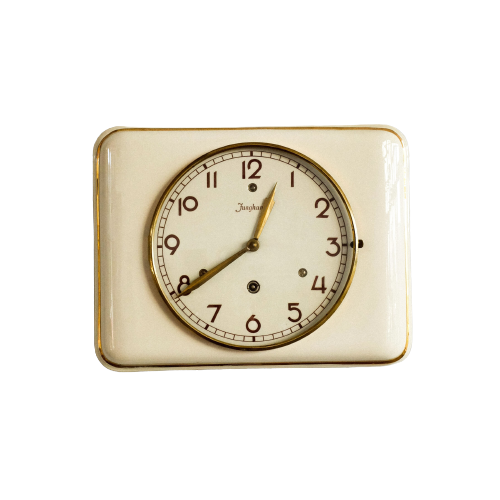Can anyone help me with a list of original offerings of wood types of lcw's. I am trying to restore a vintage chair that is more likely Miller than Evans. More specifically, I am trying to reveneer a drilled out back of a light colored wood and hope to pick the proper veneer. I can not find a definitive list of wood offerings on the internet or in books. It is looks to me to be Ash, Birch or Maple. Thanks for your help, Khus
ash
Thanks for your insights. I am going to try and locate some ash veneer. I have been reading up on using a vacuum bag for the process. Looked at www.roarockit.com and their product is intended for skateboards, but looks doable.
Does anyone have any experience trying to reveneer something along the lines of an LCW back?
Thanks, Khus
5-2-5 means Evans?
Continuing my search for good info, I obtained the book, "Classic Herman Miller" by Leslie Pina c.1998 from the library. Interesting list of wood/materials offerings over time as follows:
1. Mahogany 1946-48,2. Rosewood 1946-48 again 1961-66,
3. Oak only 1953,4. Avodire 1946-48,5. Canaletta 1946-47
6. Slunkskin 1948-53, 7. Fabric 1948-53,8. Leather 1948-53
9. Yellow 1946-48,10. Red 1946-58,11. Black 1946-66
12. Walnut 1946-58 again 1962-66,13. Birch 1946-58
14. Calico Ash 1946-66,15. Zebrawood 1958-59,
16. Teak 1958-61
Numbers of each are also discussed, here are a few numbers:
1948:600 chairs each of Walnut, Calico Ash and Birch.
1949:1000 each of Walnut, Calico Ash and Birch, plus 719 black and 511 red chairs.
I had forgotten about the 5-2-5 screw pattern indicating that my 2 chairs are Evans production. Book says H. Miller purchased production rights and moved manuf. to Michigan 1949. I bought both chairs from the same owner-she bought new. Looks like 1 is Calico Ash and the other Birch(much lighter-no dark grain). Had to get them out of storage to compare them. I checked Eames Office website which shows the Calico Ash.
Thanks for your input, thought someone might find the above interesting. Khus
Wait I found one:
at MoMA:
Three-Legged Side Chair
Charles Eames (American, 1907-1978)
c. 1944. Molded canaletta plywood, lacquered metal rod, rubber shockmounts, and rubber glides, 29 3/4 x 19 x 20" (75.6 x 48.3 x 50.8 cm). Manufactured by Evans Products Co., Molded Plywood Div., Venice, CA. Gift of the manufacturer
65.1946
http://moma.org/collection/browse_results.php?artistFilterInitial=T&crit...
The vacuum bag
method is what you want, I think. But it won't be easy: The curves at the edges of the seat-back will require some tricky manipulation of the veneer, to keep it from bunching and wrinkling. I have done vacuum-bag veneering, and I honestly can't say how I would solve that problem. Glycerine water is used to soften veneers, but I don't know how much can remain in the wood without interfering with glue. White glues and urea formaldehyde give the most open time; I'd like to know if anyone has veneered using polyurethane glue.
The oldest going vac bag outfit in the U.S. is the one in Maine. They are reliable.
Assuming you succeed there, another challenge, as simple as it might sound, is getting a perfectly flush (and mechanically sound) plug for your holes. Remember, this is the exact spot were the new ribber shock-mounts will be positioned, so it has to be strong. And any irregularity at all will telegraph through the veneer. Don't think that the veneer and glue will hide a slight rise or dip in the surface; rather, it will amplify it -- just like a coat of paint.
I can advise some possible solutions.
I wonder if anyone is doing this job successfully on a commercial basis. . .
vacuum veneering
Thanks for yours insights and expertise-
That makes good sense to make certain the plugs are perfectly flush. I currently have the 2 backs filled with a plastic wood product where they were drilled with my attempted veneer plug over the top. The plugs are visually unsightly, hence my decision to reveneer the entire back. Physically, they feel pretty smooth, but could be better. I will fill any remaining fissure and sand it until undetectable by touch before continuing. I did use a Dremmel to prepare the plastic wood under the veneer plugs to get proper control of the depth for the veneer application.
By the way, neither of the backs are original to the chairs. I bought the 2 chairs sans backs 20 years ago. I found one drilled birch(it matches the one chair) back soon after. The other drilled back is dark wood, likely walnut(helpful list) which I bought on ebay last year. It needs to be reveneered front and back to come closer to the Calico Ash(working theorem) chair base.
I am not too concerned about strength of the plug as the oval rubber shockmount is much larger and covers both holes with nearly 1" beyond each hole. Majority of contact is wood back to rubber shockmount ratio wise.
Eames Office shows a good example of the Calico ash(google images "calico ash" and Eames site is one of the first). After seeing that example and finding the list of woods, then pulling my chairs out for comparison;I feel about 90% certain that the one is birch and the other Calico ash.
I did get one estimate on a professional (danish modern expert)doing the reveneers. He wanted about $250 per back and he had no level of confidence in the outcome.
Any more advice is greatly appreciated!!
If you need any help, please contact us at – info@designaddict.com









